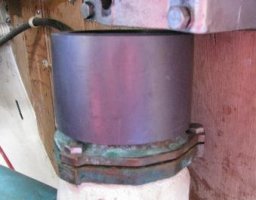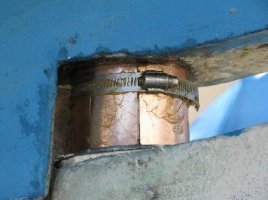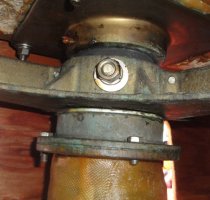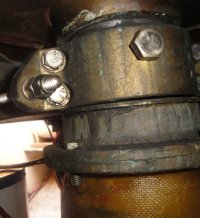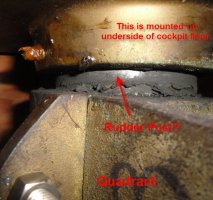Kerry Kukucha
Member II
Hello All:
OK, so I have finally figured out this boating thing! One does not actually get to do much sailing – it’s all an excuse to have a list of never-ending projects & the joy is in the puttering?!
Having overcome recent mechanical woes on Nakesa, we have now determined that our rudder needs to be replaced due to water ingress, sun exposure & freeze/thaw (having been stored on the hard) & as a result, one side has developed a pronounced wave – have been in touch with Foss & their price for a new rudder is pretty good, in particular if the existing shaft/post is in good shape & can be re-used.
So………, I will be dropping the rudder this weekend & would welcome any advice or thoughts ya’ll may provide (I’ve reviewed numerous related threads).
With our 38-200 (1988), which has an Edson quadrant, I think the process will be:
1) quadrant - loosen 2 outside perimeter bolts & 4 bolts around the shaft/post (& support quadrant pre-drop) – all bolts have already been liberally lubricated & fortunately, there appears to be no corrosion. Am I correct in assuming the quadrant does not have to be fully removed?
2 remove larger bolt that goes through shaft
3)lower rudder
4) remove 3 bolts holding brass flange & prepare to re-pack with 5/16” stuffing (per manual)
5)measure post vs. flange diameter for possible addition of brass shims
6)Reverse the procedure for re-installation.
Boy, this looks pretty easy? (provided I can become a contortionist whilst crawling in the aft locker) – what have I missed? What might go wrong?
Many thanks for wisdom shared!
OK, so I have finally figured out this boating thing! One does not actually get to do much sailing – it’s all an excuse to have a list of never-ending projects & the joy is in the puttering?!
Having overcome recent mechanical woes on Nakesa, we have now determined that our rudder needs to be replaced due to water ingress, sun exposure & freeze/thaw (having been stored on the hard) & as a result, one side has developed a pronounced wave – have been in touch with Foss & their price for a new rudder is pretty good, in particular if the existing shaft/post is in good shape & can be re-used.
So………, I will be dropping the rudder this weekend & would welcome any advice or thoughts ya’ll may provide (I’ve reviewed numerous related threads).
With our 38-200 (1988), which has an Edson quadrant, I think the process will be:
1) quadrant - loosen 2 outside perimeter bolts & 4 bolts around the shaft/post (& support quadrant pre-drop) – all bolts have already been liberally lubricated & fortunately, there appears to be no corrosion. Am I correct in assuming the quadrant does not have to be fully removed?
2 remove larger bolt that goes through shaft
3)lower rudder
4) remove 3 bolts holding brass flange & prepare to re-pack with 5/16” stuffing (per manual)
5)measure post vs. flange diameter for possible addition of brass shims
6)Reverse the procedure for re-installation.
Boy, this looks pretty easy? (provided I can become a contortionist whilst crawling in the aft locker) – what have I missed? What might go wrong?
Many thanks for wisdom shared!
Last edited:

